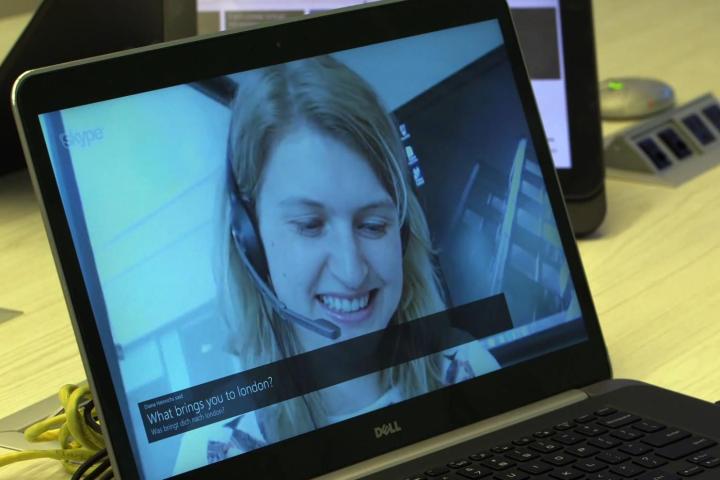
Microsoft is developing a language translation feature for Skype that will automatically translate your words into the preferred tongue of the person on the other end of the Skype call. In a demo of the real-time Skype Translator that Microsoft showed off Wednesday at Re/Code’s Code Conference, a call was converted from English into German and vice-versa as remote co-workers discussed alterations to a project.
Assuming the new Skype Translator feature works as advertised, language barriers could be less of an issue going forward (that’s if Skype becomes some sort of common communication platform, of course). It will launch on Windows 8 before the end of 2014, Microsoft said.
“Imagine in the very near future technology allowing humans to bridge geographic and language boundaries to connect mind to mind and heart to heart in ways never before possible,” wrote Gurdeep Pall, Corporate Vice President of Skype and Lync at Microsoft. “Language barriers have been a blocker to productivity and human connection; Skype Translator helps us overcome this barrier.”
According to the demonstration, this feature was developed by the teams that work on Skype, Microsoft’s Research Lab and Bing. Interestingly, it’s an offshoot of the same technology that’s currently being used to power Cortana, Microsoft’s personal voice assistant on Windows Phone 8.1 devices. Microsoft has yet to confirm which languages will be supported for the launch later this year, but given the demo, it’s likely both English and German will be at the top of the list.
During the presentation, Microsoft alluded to the fact that this technology was somewhat similar to the fictional universal translator made popular within the Star Trek series. Of course, Microsoft isn’t the first company to launch a language translation product. Last year, a team in San Francisco launched an Indiegogo project for a mobile translation product called SIGMO.
That product has yet to launch, however, despite raising nearly a quarter of a million in funding. This is typical of many crowdfunded projects, as product inventors often don’t have a firm grasp on the multitude of issues that can occur when attempting to manufacture a product domestically or overseas.


